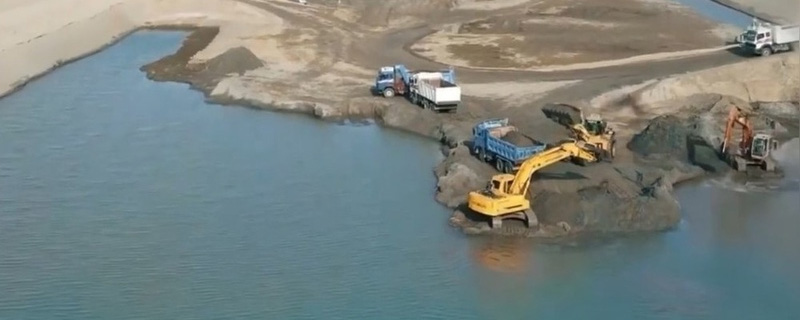Water as the New Geopolitical Pivot


In discussions of global power, attention often centers on oil wells, gas pipelines, or trade corridors. Yet one resource surpasses all others in fundamental importance, life-sustaining power, and the ability to determine nations’ futures: water. Across Eurasia, water is fast becoming the decisive factor in whether states pursue cooperation or slide into conflict.
At the heart of this emerging geopolitical shift lies Afghanistan’s ambitious Kosh Tepa Canal Project, designed to divert critical flows from the Amu Darya River. While promising life and livelihood for millions of Afghans, the project has raised alarm across neighboring Central Asian countries. Despite its strategic significance, international attention remains limited—a silence that could presage a major regional crisis.
Kosh Tepa Canal: Lifeline for Afghanistan, Threat for Neighbors
According to climate researcher Kamila Faiziyeva, the Kosh Tepa Canal stretches 285 kilometers, with the capacity to irrigate vast areas of northern Afghanistan. After decades of war and sanctions, this project promises a revival of food security—a lifeline for millions of farmers struggling with drought and poverty.
Yet what appears as salvation for Afghanistan poses potential upheaval for Uzbekistan and Turkmenistan. Both nations rely heavily on Amu Darya’s waters for agriculture, livelihoods, and regional stability. Every cubic meter diverted by Afghanistan has profound consequences. Afghan authorities, naturally, assert a sovereign right to the waters flowing through their territory—a contention rooted in population needs and national survival.
The Growing Web of Water Conflicts
Water disputes are not unique to Afghanistan. Across Eurasia and beyond, transboundary rivers are fraught with tension. South Asia’s Indus Water Treaty between India and Pakistan, for instance, has managed to prevent outright conflict despite historical animosities. Yet even there, floods, accusations of unilateral exploitation, and environmental stress reveal the fragility of water agreements.
Afghanistan faces an even more precarious situation. Unlike India and Pakistan, which at least have formal treaties in place, Kabul lacks comprehensive agreements with its northern neighbors regarding the Amu Darya basin. With the exception of a limited treaty with Iran on the Helmand River, Afghanistan operates in a legal vacuum—a paradox where the country most in need of water has the weakest institutional integration.
Geopolitical Stakes and External Influence
The Kosh Tepa Canal is not merely an environmental project—it is a geopolitical lever. Central Asia has long been a theatre of Russian, Chinese, Turkish, Iranian, and Western influence. A project of this scale could become another flashpoint, inviting external actors to capitalize on tensions. Instability in this region would ripple beyond local boundaries, affecting global energy markets, trade corridors, and European security.
Thus, while the canal appears to be a domestic Afghan initiative, its implications resonate across Eurasia’s entire geopolitical landscape.
Cooperation as a Path Forward: SCO and Multilateral Frameworks
Regional institutions may offer partial solutions. The Shanghai Cooperation Organization (SCO) is the most obvious candidate for mediating such disputes, bringing together Russia, China, Central Asian republics, and Iran—all key stakeholders in regional stability. Gradually integrating Afghanistan, currently an observer, into such mechanisms could foster a neutral, regionally owned water-sharing framework.
Complementary avenues exist: reviving the International Fund for Saving the Aral Sea (IFAS), negotiating bilateral agreements, or pursuing multilateral dialogues through UN-backed channels. The OIC can play a symbolic role, while China’s Belt and Road Initiative could fund water-efficient technologies. The CSTO and Eurasian Economic Union could integrate water security into their agendas, given agriculture and trade exposure.
The Peril of Unilateral Action
Without cooperation, unilateral water projects could trigger cascading crises. Countries may pursue ‘hydro-sovereignty’ aggressively, building dams or diversions without regard for neighbors. Similar tensions have occurred globally: Ethiopia’s Grand Renaissance Dam has strained relations with Egypt and Sudan; Turkey’s GAP project has impacted downstream Syria and Iraq. Unchecked, unilateral water exploitation inevitably escalates regional friction.
Taliban, Sovereignty, and Diplomatic Necessity
For the Taliban, seeking international legitimacy, the Kosh Tepa Canal is a symbol of sovereignty, governance, and food security. Ignoring Afghanistan’s water needs is unsustainable; yet unconditioned acquiescence by neighbors is equally unacceptable. Dialogue is the only viable path forward. Engagement with Kabul is therefore both practical and strategic. Water disputes rarely remain local. Scarcity fuels migration, instability, and extremism. Syria’s civil war, for instance, was exacerbated by prolonged drought—a reminder that climate and water issues amplify existing geopolitical and social crises.
Conclusion: Water Diplomacy or Water Conflict
In short, water politics has emerged as a central geopolitical factor. Afghanistan’s canal illustrates how a resource often taken for granted can become a strategic pivot. Successfully transforming this potential flashpoint into a platform for cooperation could prevent a crisis while demonstrating Eurasia’s capacity for self-reliant stability, independent of uncertain Western interventions.
The choice is stark: water diplomacy or water conflict. Regional actors must act decisively before the canal’s operations render negotiation impossible. Preventive diplomacy remains far less costly than managing conflict after it erupts.Eurasia faces a defining moment. Will nations build a bridge to shared prosperity over this water issue, or will it deepen existing fissures? The future of regional stability and wealth hinges on the answer.
Anwar Hussain is a senior journalist and academic.